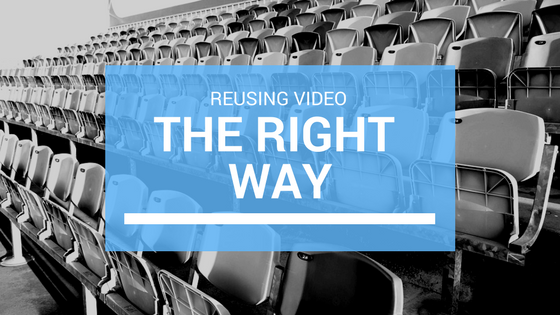The interconnected space we call the internet is a congregation of people browsing and creating; They browse and create at different times, in different moods, and within different conditions.
As such, we must be cognizant of the time-incidence of our content. When we share our content determines who will see it and engage with it. Most marketers know this tidbit quite well, but what else does it imply?
People are as modular as the systems we use. In order to capture the attention of our intended audience we must run our content through a cycle of visibility.
Essentially all posting mediums feature the ability to schedule a post; all software take it one step further and feature algorithms that auto-post based on peak times. This is obviously the bare minimum with visibility, but we can we do better than that.
Que in the content repurposing model. A fitted model that helps your company achieve a robust cycle for your content: an effort in maximum efficiency.
Each company will have their own custom model that works for them; this post will be focusing on the video side of the model and how to best stretch your valuable marketing dollars.
Break Up Your Video
Video is the integration of pixels and sound. You have both a visual track and an audio track: use them for other services! At the very least, take some time to experiment and see what works for your organization.
Fortunately, audio is the perfect scapegoat for some experimentation. Have an hour or two twice a week? Start a podcast and include an audio (if appropriate) highlight of one of your videos during the feature. Have a demand for video transcripts? Start a transcription service of your videos. These ideas should be scalable and ultimately generate revenue or leads.
We can’t forget about the pixels either. There are so many pixels to work with in just one short video, but more importantly: those pixels form hundreds and thousands of frames. Fitting those frames together is storytelling. Taking those frames and crafting a trailer for your content or hand picking and splicing segments to convey a message is repurposing.
Video is amazing in that it can be transformed to become any form of media. Using only one video, a modicum of creativity, and a little bit of polish: a picture, text, podcast, and even a blog post can all be rapidly generated.
Repurpose Before Purpose
We’ve always been told to “think in the long run”. That we should start thinking about our endgame then work backwards, “what do I need to do to get from here to there?”. In the world of content video, our endgame should be: how we repurpose said content.
Think of how your company might want to repurpose video before creating it. The same story can be structured in many ways; a story can only be repurposed depending on how it is structured. So more specifically: think about how you want to repurpose the video before you decide structure. Tweaking the structure to facilitate your content marketing model allows for a seamless content pipeline.
Audience, Audience, Audience
We’re still in the realm of content marketing; so you must absolutely do your due diligence on audience. Most importantly for repurposing: how does your audience prefer to consume information? Does much of your audience listen to podcasts during their morning drive? Do they prefer digesting content through text? What are the most popular forms of media on the websites they spend the most time on?
In order to hit the content repurposing stride that your company deserves: adapt video to meet audience need. Having your video content accessible in separate forms gives options to your viewers–enabling them to choose the optimal mode of consumption. This can only be favorable for your company. Not to mention visibility.
In the content marketing world: businesses begin and end on audience. As such, it is apt that I end on a note about audience. And it is a point that I can’t stress enough. Continue providing your followers the best content, but you owe it to yourself (company) and your audience to come up with a great content repurposing model.
